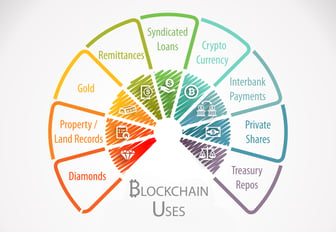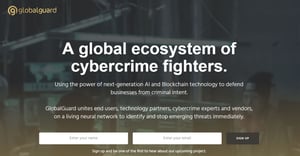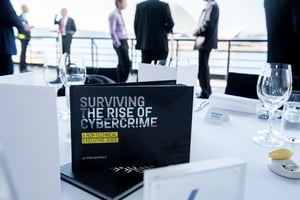The public image of Blockchain technology - especially cryptocurrency, it’s most visible application to date - is controversial, at best.
The example of a Blockchain system that most people are aware of is Bitcoin, and the history of that now famous cryptocurrency has been marred by high profile thefts that have tainted the public image of Blockchain in general.
Cryptocurrency is still widely misunderstood. According to recent survey data, nearly 80% of Americans still have no idea how to buy cryptocurrency, much less what it is useful for.
Cryptocurrency commentator Han Chang, co-founder of CoinFi, a leading crypto research group, has summarised crypto’s PR problem very well, saying:
“Crypto is outperforming almost every other traditional investment at the moment, yet it’s still widely misunderstood and can be unpredictable without the right background and knowledge.”
The key takeaway from that statement is about knowledge.
Yes; Bitcoin has been unpredictable.
Yes; Bitcoin may be a risky investment.
But; Blockchain is much more than just Bitcoin, or cryptocurrency for that matter. Blockchain can be employed to do all kinds of things; crypto is just the beginning.
Beyond Bitcoin: ETH
Ethereum is an interesting Blockchain project that possesses some of the characteristics of Bitcoin but also does things that Bitcoin doesn’t. Ethereum, commonly abbreviated to ETH, was conceived partly as a platform for ‘smart contracts’; a way to make safer transactions that are only completed once certain specific terms are met.
A high-profile example of ETH being used in the real world was TechCrunch founder Michael Arrington’s purchase of an apartment in Kiev, Ukraine. According to Newsweek Arrington bought his $60,000 apartment in Kiev using smart contracts and ETH without even visiting Ukraine. The Blockchain platform managed the agreements between the buyer and seller, executing the terms of a contract only when the mutually agreed terms and conditions were satisfied.
Because of its versatility and security features, ETH has grown into one of the primary platforms for Initial Coin Offerings (ICOs). In 2017 US$5.6 billion was raised via ICO's based on the ETH platform.
Ledgerium
 An innovative non-crypto project using Blockchain, Ledgerium is designed to be a decentralized accounting ledger system.
An innovative non-crypto project using Blockchain, Ledgerium is designed to be a decentralized accounting ledger system.
Ledgerium’s founders call their business model Blockchain as a Service (BaaS) and describe it as a system which ‘rationalizes debtors and creditors via Smart Contracts, providing reliable Authorization Control & Real-time Auditing.’
Ledgerium’s co-founder Adam Wang presented the project at the Wholesale Investor Melbourne Crypto and Blockchain Convention and made a strong case for the benefits of Blockchain to the accounting space.
Essentially, Ledgerium is creating a transparent multi-client ledger. Where traditional double-entry bookkeeping only allows for bilateral verification of transactions, accounting in a Blockchain environment can coordinate verified transactions between multiple partners simultaneously and in real time. It’s a perfect example of Blockchains strength as a large network trust framework; making complex transactions automatic and visible.
You can read more about Ledgerium, here; it’s a really interesting project that has the potential to disrupt the accounting model we’re all accustomed to and make business simpler and more secure.
Across the board, one of the strengths of Blockchain is it’s transparency and security compared to centralised online systems. Although Blockchain isn’t a security solution in itself, it’s characteristics make it very useful in preventing fraud, especially across large dispersed networks.
The future of security is collaborative
Speaking at the MailGuard CxO Cybersecurity Luncheon in Melbourne, Microsoft Australia’s Anita Sood said this about the need for better collaboration in cybersecurity:
“To handle all the cybersecurity threats that are coming takes a family, an ecosystem... and it needs to be a multi-layered approach to give us the depth of protection we need; governments, the commercial sector, technology companies coming together…”
That’s a sentiment I completely agree with and it’s that mission of cooperation that first got me thinking about Blockchain as a cybersecurity tool.
One of the things that Blockchain platforms can do really well is incentivise collaboration. A community working on a Blockchain project can exchange information, payments and commodities securely and seamlessly without being restricted by international boundaries. Blockchain systems foster cooperative work because they operate on the principle of decentralisation, and help to eliminate not only 3rd party intermediaries but also the need for executive level administration of projects. If you’re trying to coordinate the efforts of a large, international team, Blockchain offers a lot of benefits as a management structure.
Blockchain and online security
According to a 2018 Radicati Group study, there will be more than 3.8 billion email users before the start of 2019; over 100 million more than the previous year. Half of the population of the entire planet uses email, so protecting the security of inboxes is more important than ever.
It was the large-scale collaboration characteristics of Blockchain that got my attention when I was looking to improve the way we work on cybersecurity problems. The challenge of cybercrime is so huge now that working in a disparate uncoordinated way isn’t an acceptable strategy anymore. Even the world’s largest companies and governments can’t win the war on cybercrime by acting alone. A collaborative approach is the only way forward; we’ve all got to participate in stopping these threats. We need to get researchers, white-hat hackers, IT people and customers together to beat the problem.
 The project I’m working on right now, GlobalGuard, will be a Blockchain based mechanism for real-time collaboration on cybersecurity challenges. GlobalGuard will leverage the past seventeen years of MailGuard threat data and real-time intel to power an AI network focussed on defeating cybersecurity threats.
The project I’m working on right now, GlobalGuard, will be a Blockchain based mechanism for real-time collaboration on cybersecurity challenges. GlobalGuard will leverage the past seventeen years of MailGuard threat data and real-time intel to power an AI network focussed on defeating cybersecurity threats.
This is an opportunity to leverage massive scale collaboration; to build an unprecedented international community of cybercrime fighters.
I want as many people to participate in the GlobalGuard project as possible, whether they be businesspeople looking for a better cybersecurity solution, or young IT students working on new ways of defeating scammers.
GlobalGuard will be launching soon; to keep up with all the news, check out GlobalGuard.io and follow me on LinkedIn.
Cybersecurity explained
If you would like to learn more about the complex cybersecurity challenges facing business today, please download my e-book Surviving the Rise of Cybercrime. I wrote this book to be a plain English guide for businesspeople to the most common cyber-threats and how to protect your company.

Rob Sloan, Cybersecurity Research Director of the Wall Street Journal said this about my book:
“Cybercrime is a serious and growing business risk. Building an effective cybersecurity culture within an organisation requires directors and executives to lead by example. Surviving the Rise of Cybercrime is a must-read for directors and executives across business and in government and provides strong foundations for leaders determined to address cyber risk.”
Download your copy of Surviving the Rise of Cybercrime for free, here.
 Hi, I’m Craig McDonald; MailGuard CEO, founder of GlobalGuard and cybersecurity author.
Hi, I’m Craig McDonald; MailGuard CEO, founder of GlobalGuard and cybersecurity author.
Follow me on social media to keep up with the latest developments in cybersecurity and Blockchain; I'm active on LinkedIn and Twitter.
I’d really value your input and comments so please join the conversation.






